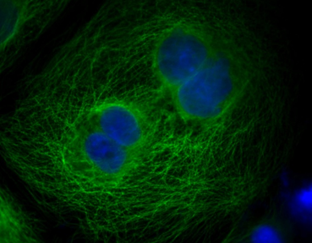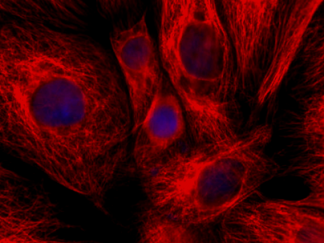VitroView™ Fluorencence and HRP Labeled Streptavidin
VitroView™ Fluorescence and HRP Labeled Streptavidin: Boost Sensitivity in Detection Assays
VitroView™ Streptavidin-based amplification techniques are extensively used in flow cytometry, fluorescent imaging, western blotting, and microplate-based detection to increase signal output and enhance sensitivity. Streptavidin conjugates are ideal for the specific detection of proteins, protein motifs, nucleic acids, and other biomolecules, making them invaluable in a wide range of research applications.
Streptavidin has an exceptionally high binding affinity for biotin, enabling it to serve as a powerful secondary detection method when conjugated to fluorescent proteins, enzymes, or gold nanoparticles. This makes it a versatile tool for precise and sensitive detection in numerous biological assays.
Common Research Applications for Streptavidin Conjugates:
- Immunofluorescence Microscopy: Detecting and visualizing cellular components with fluorescent labels.
- In Situ Apoptosis (TUNEL) Assay: Fluorescent detection of DNA fragmentation.
- In Situ Hybridization: Detection of specific nucleic acid sequences.
- Flow Cytometry: Analysis of cell surface markers and intracellular components.
- Tetramer Staining: Detection of antigen-specific T-cells.
- ELISA (Enzyme-Linked Immunosorbent Assay): Sensitive detection of target proteins or antibodies.
- Microarrays: Identifying gene expression patterns or protein interactions.
- Western Blotting: Detecting specific proteins in complex samples.
Streptavidin binds up to four moles of biotin per mole of protein, with a high binding affinity of approximately 10,000–15,000 Da. Unlike avidin, streptavidin lacks carbohydrate side chains and has an isoelectric point of 6.5, making it more compatible with biological interactions that occur at physiological pH.
Streptavidin is also widely used for the coating of solid phases to immobilize or purify biotinylated or 2-iminobiotin-labeled molecules. Its conjugation with fluorescent dyes or enzymes is essential in immunological detection assays, such as the highly reliable streptavidin-biotin system.
Key Benefits of VitroView™ Streptavidin Conjugates:
- Enhanced Sensitivity: Increases signal detection in various assays.
- High Binding Affinity: Binds tightly to biotin, ensuring accurate and reliable results.
- Versatile Applications: Ideal for flow cytometry, ELISA, western blotting, and more.
- Wide Range of Conjugates: Available in fluorescence and HRP (Horseradish Peroxidase)-labeled formats for diverse detection needs.
Maximize your research accuracy and sensitivity with VitroView™ Streptavidin conjugates, providing reliable, high-performance detection solutions for your biological assays.
Showing all 3 results



